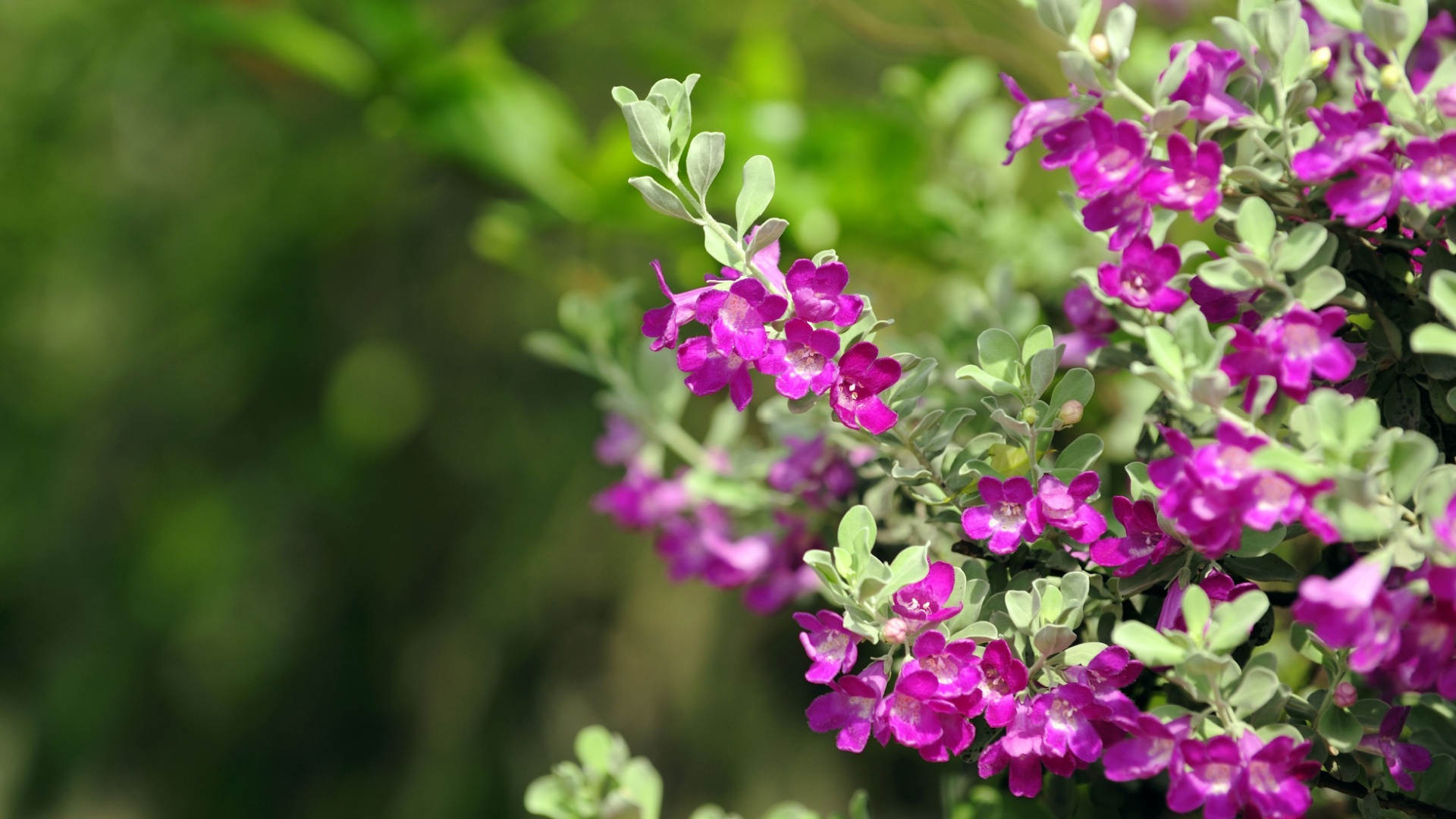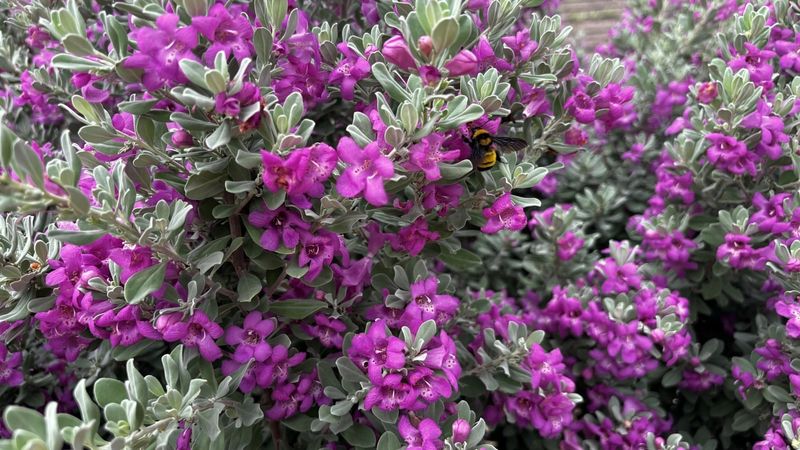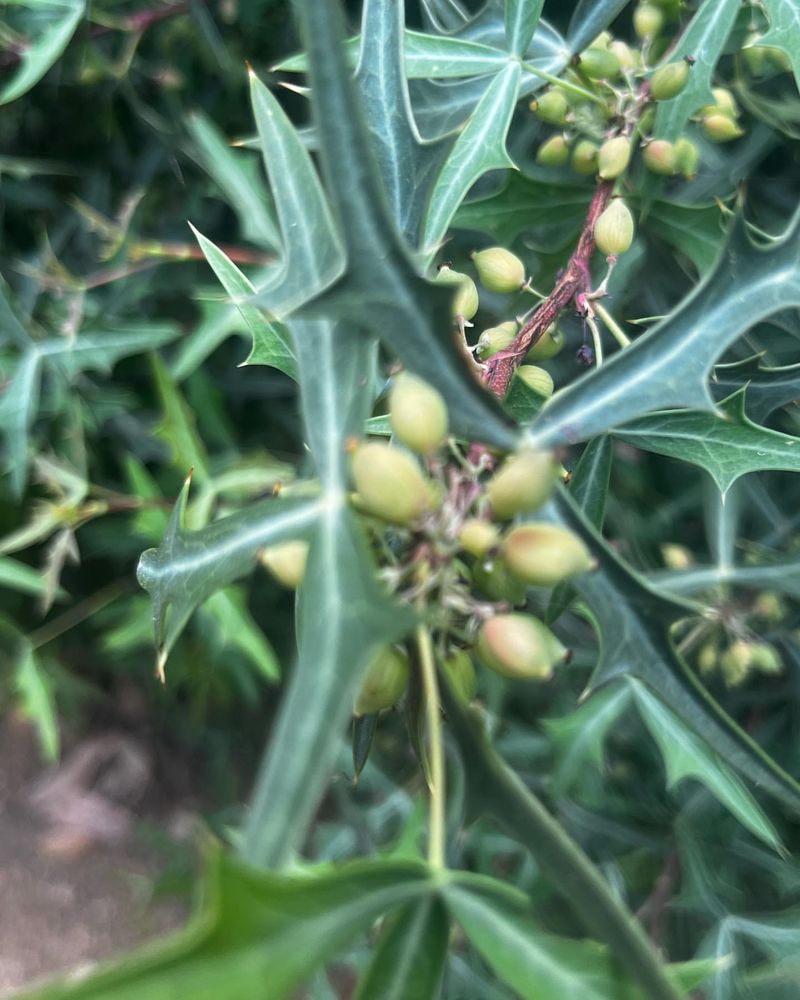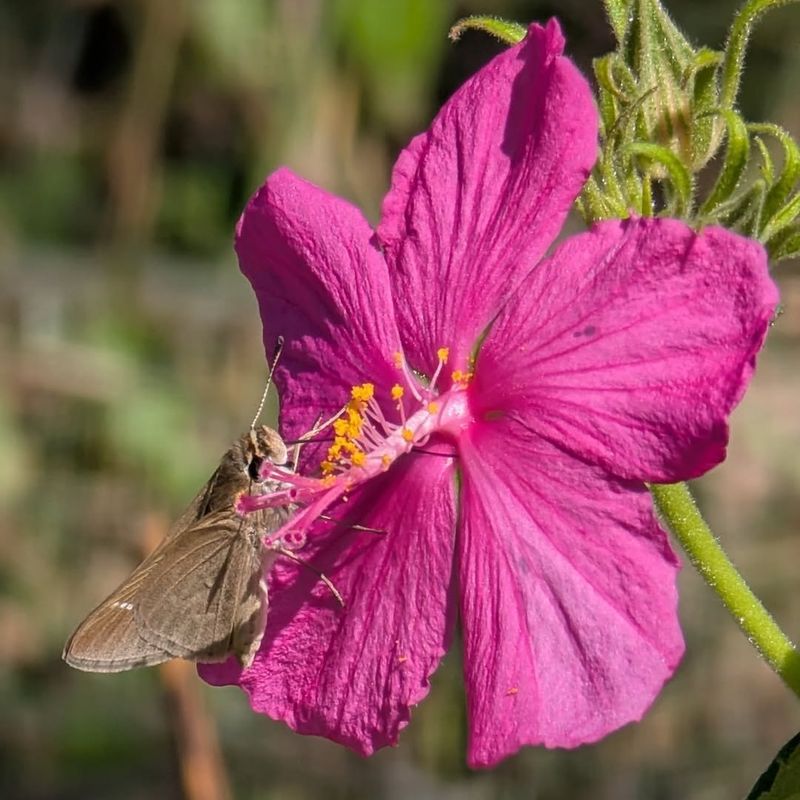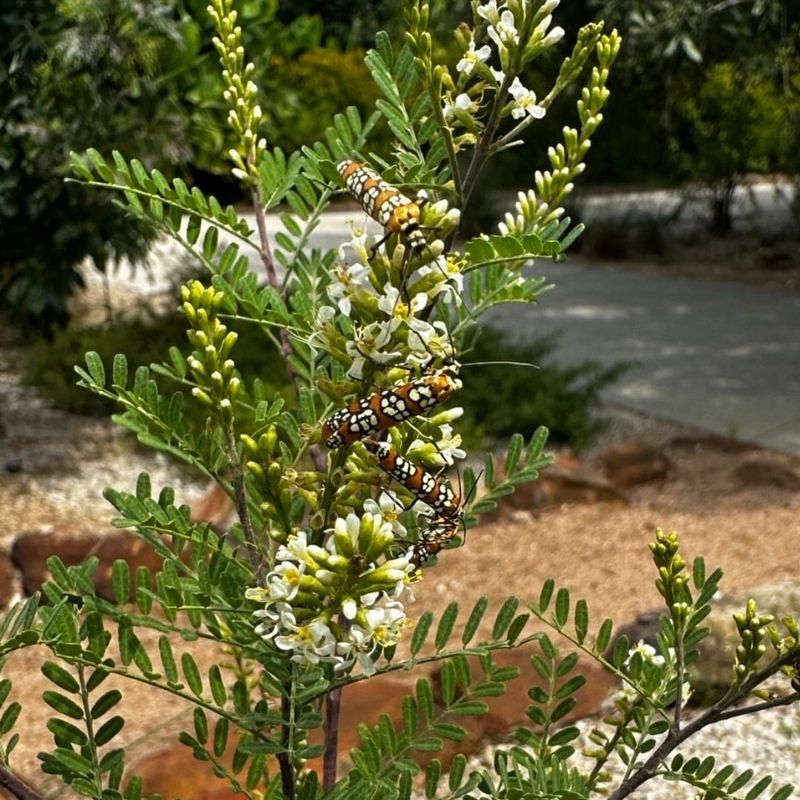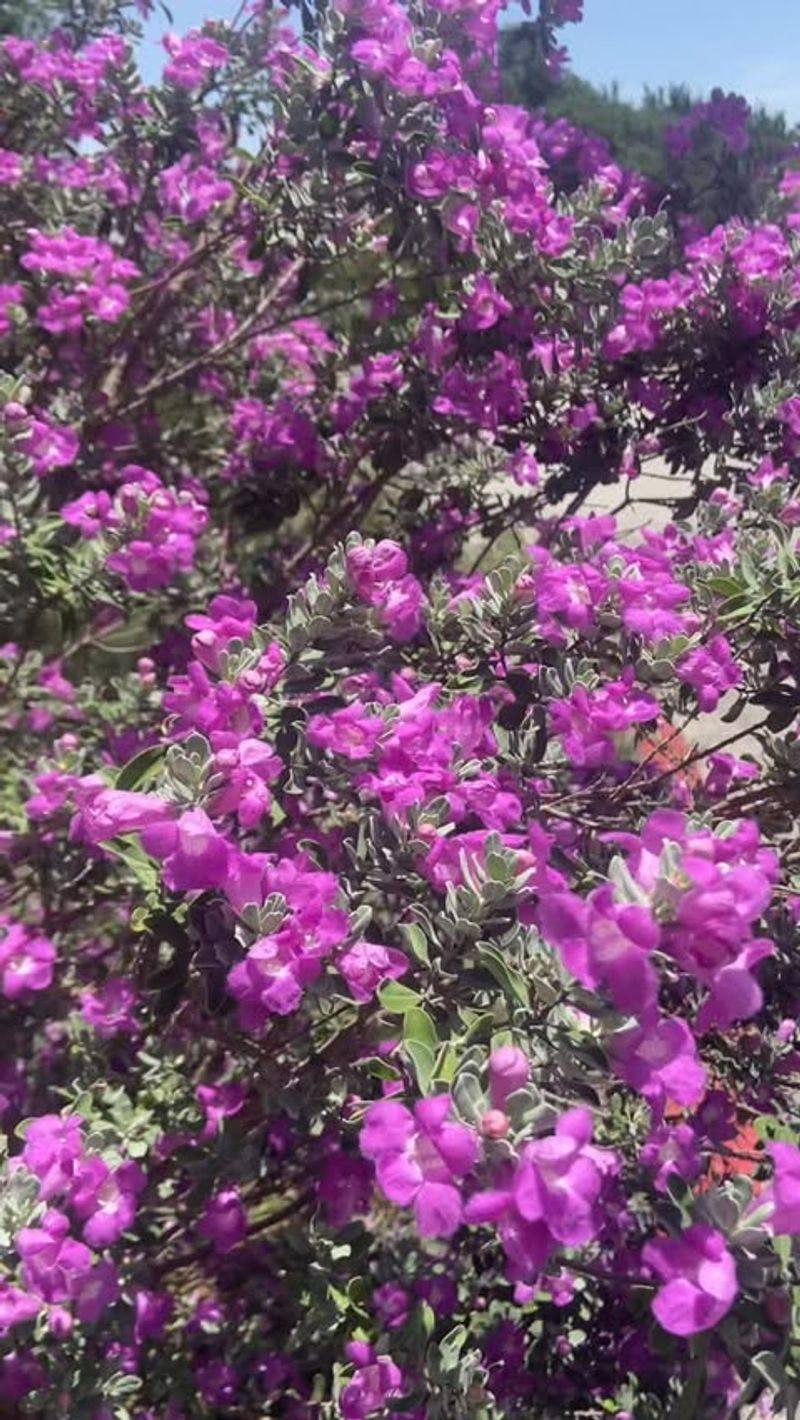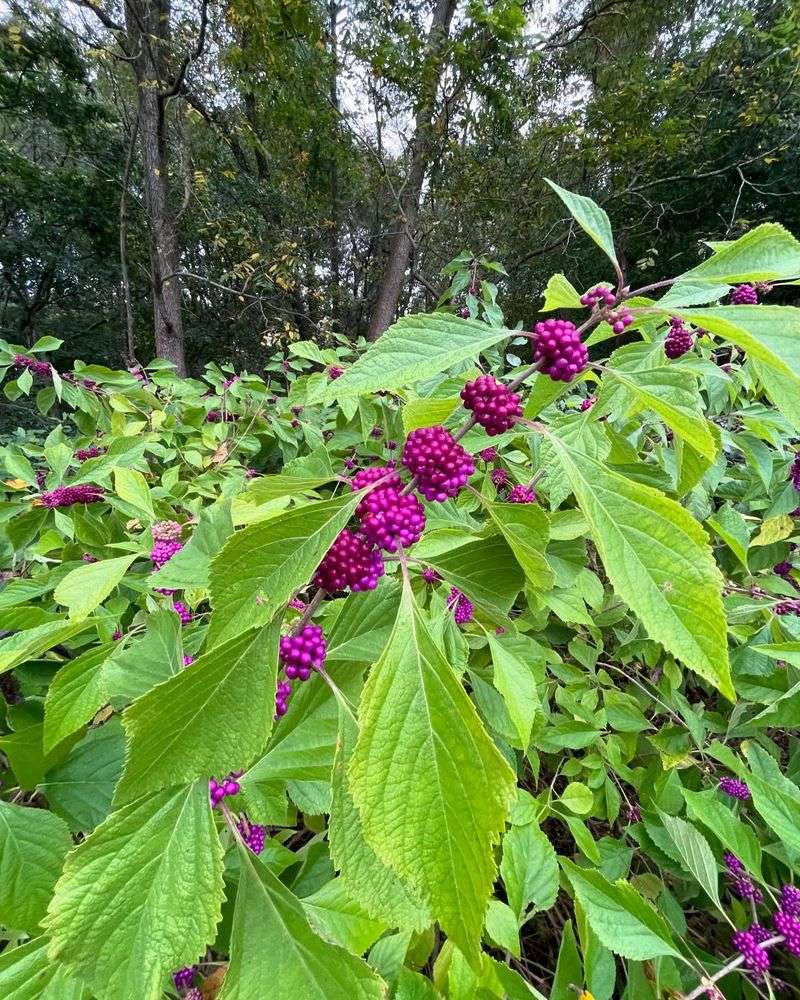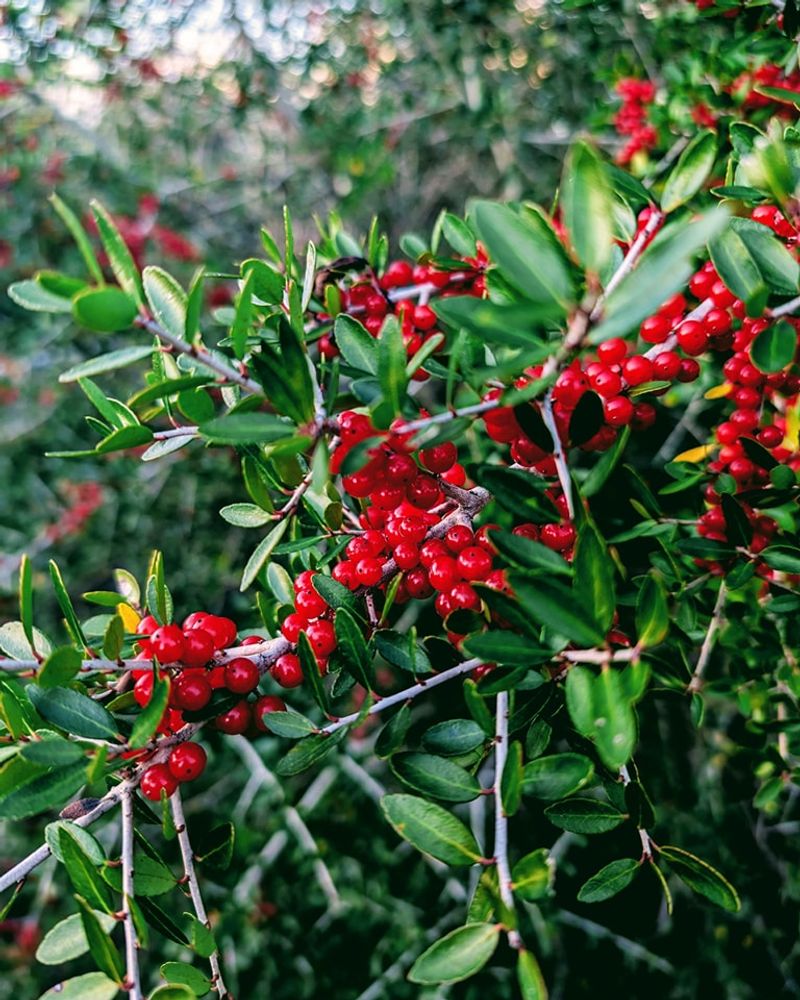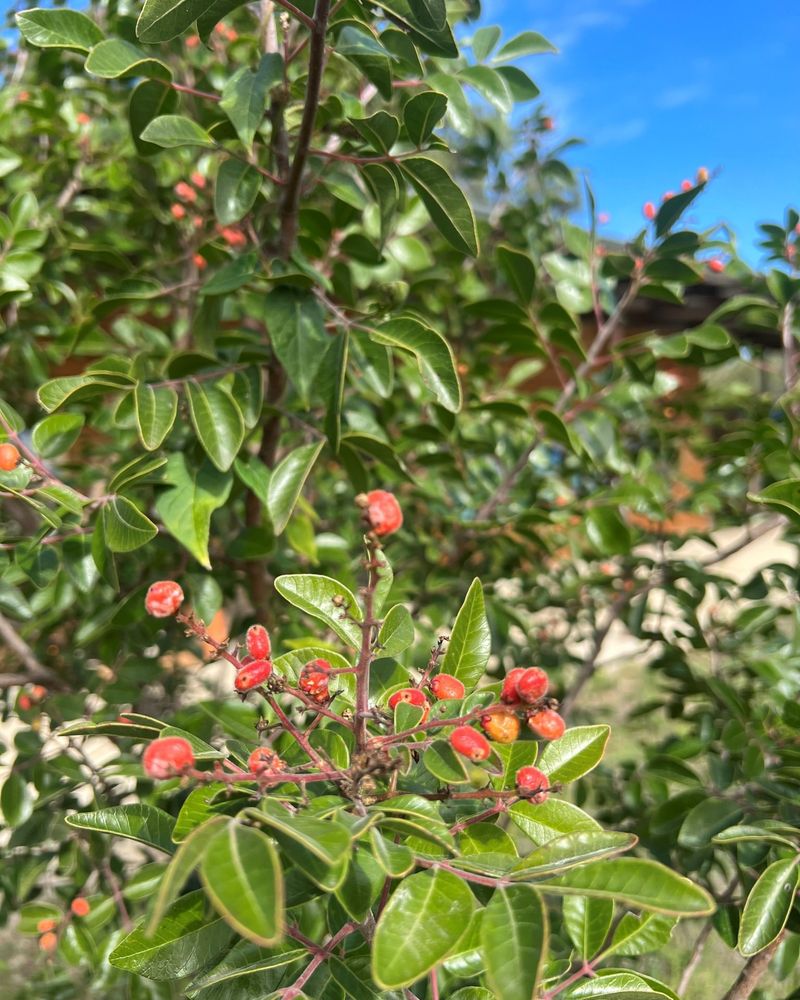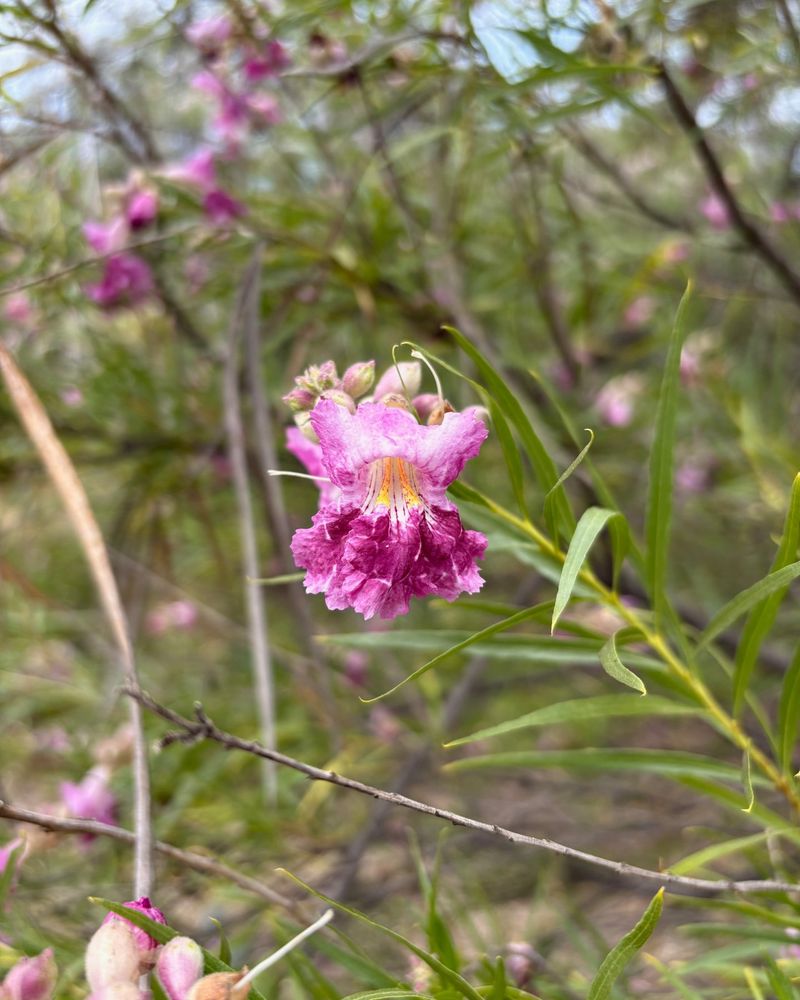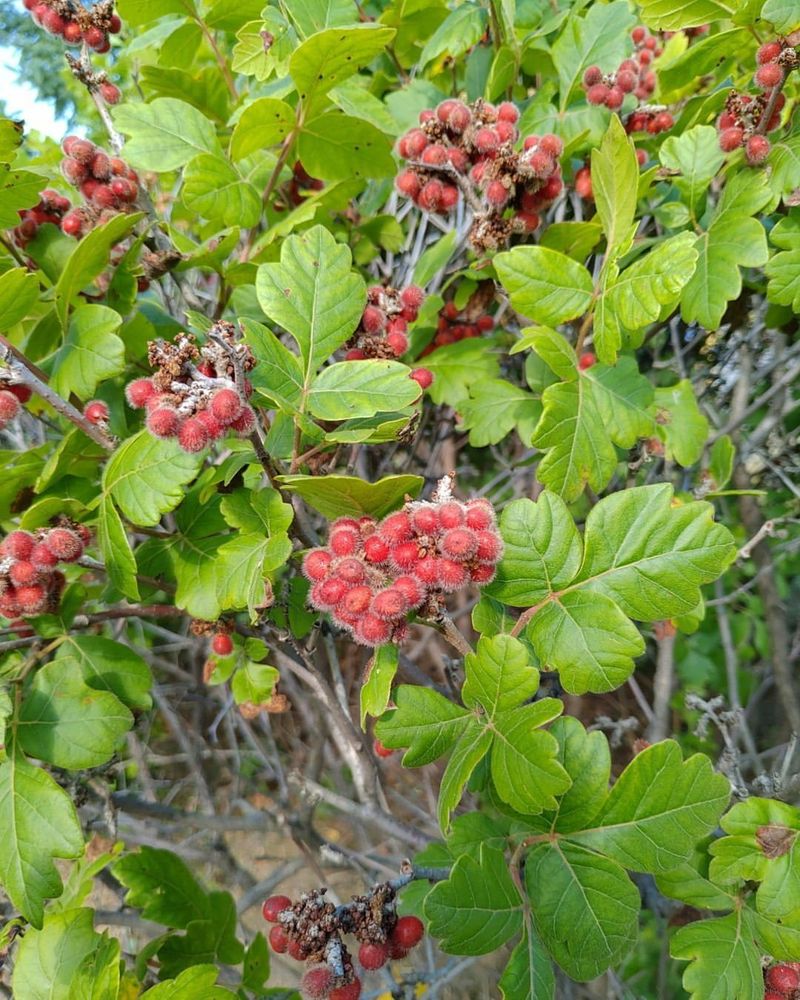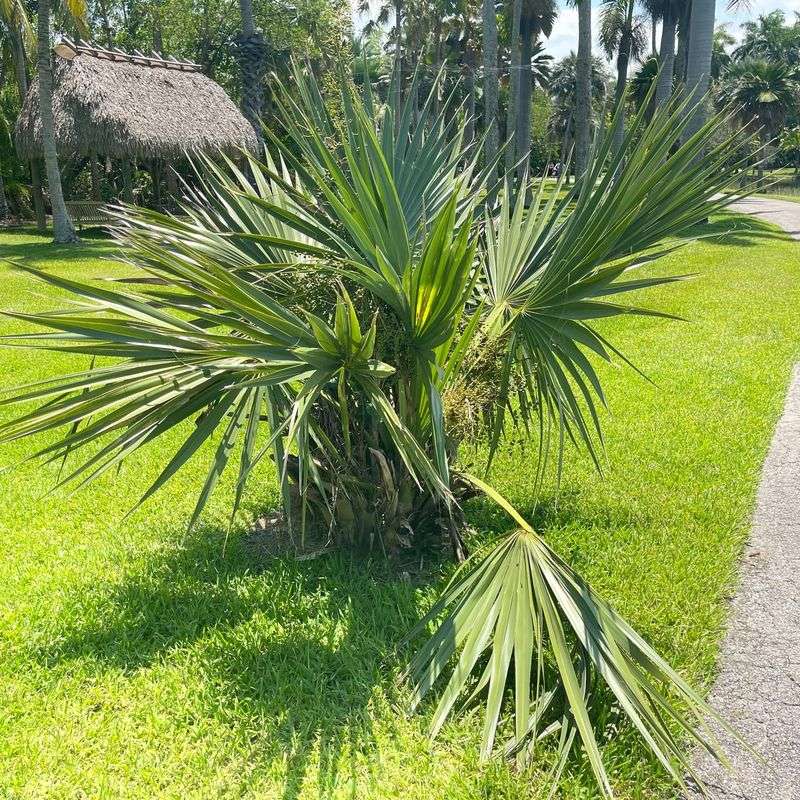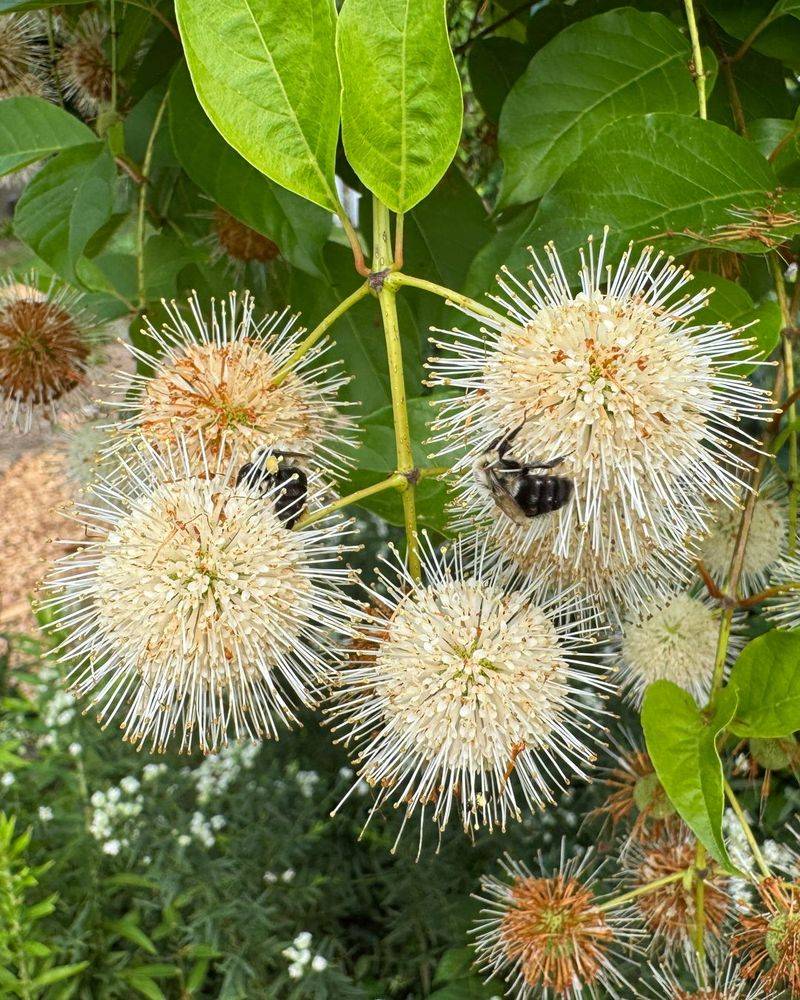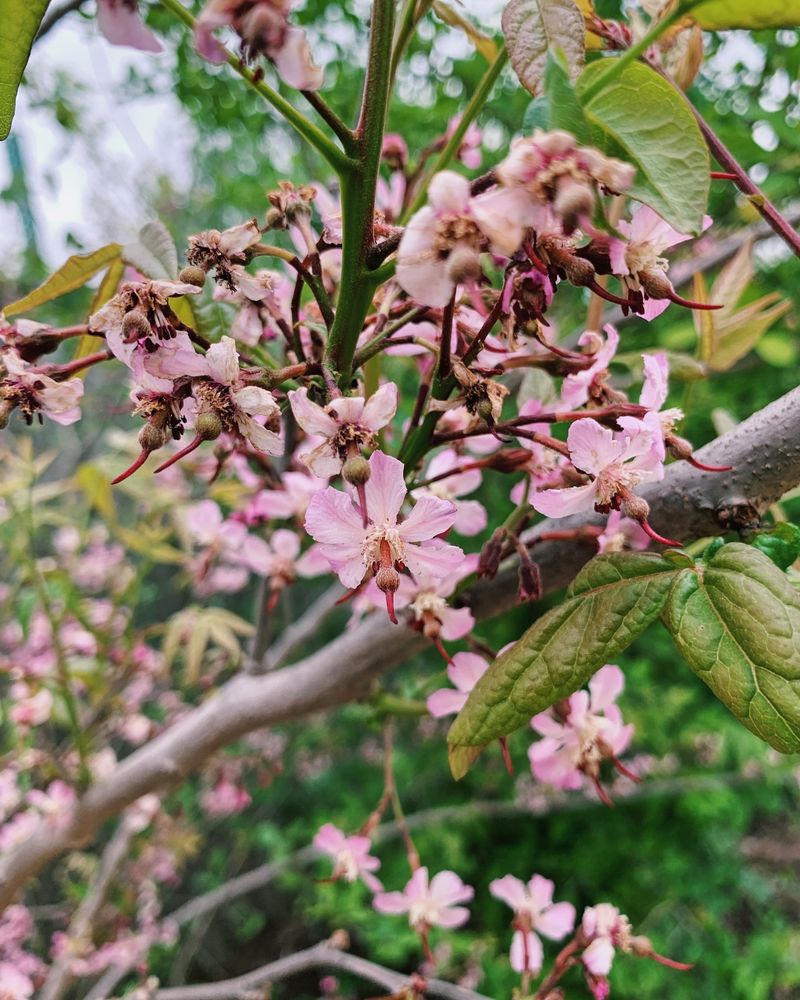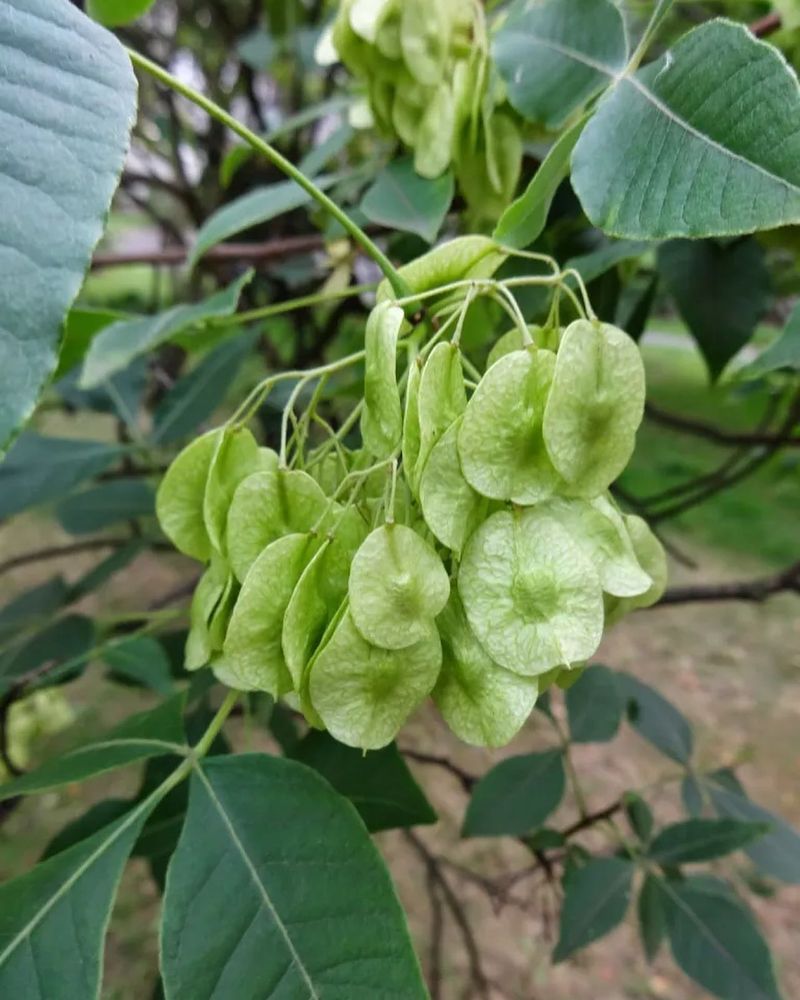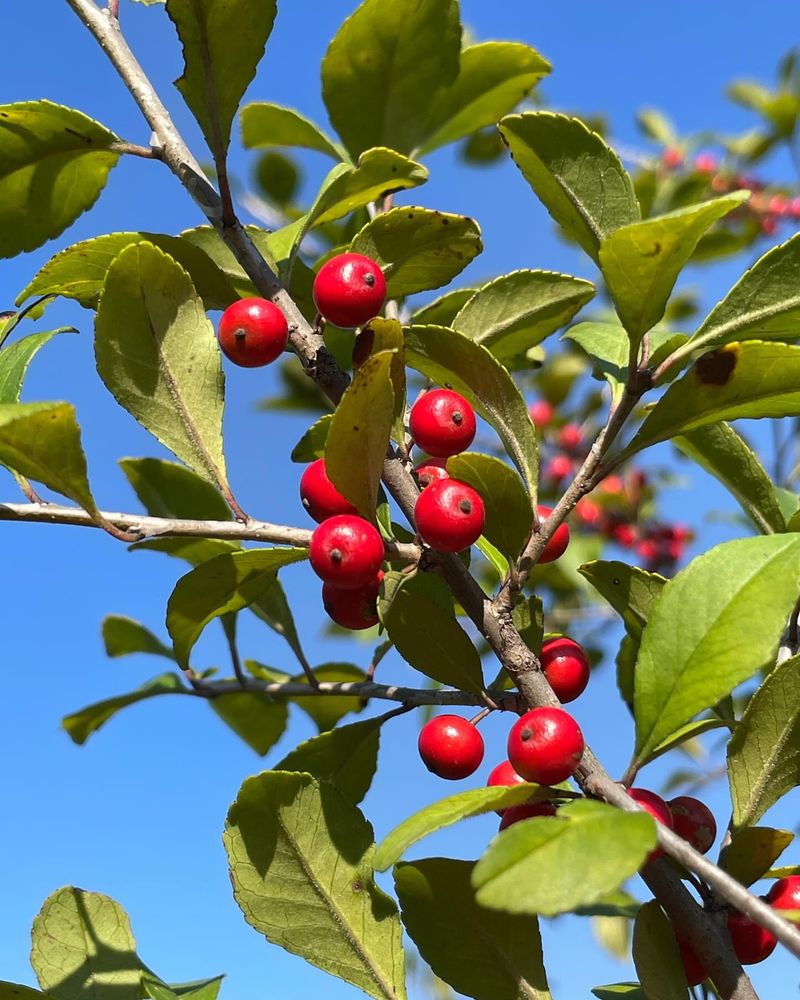Late summer in Texas brings a spectacular display of native shrubs that thrive despite the scorching heat. These resilient plants not only add beauty to our landscapes but also provide essential habitat for local wildlife and require less water than non-native options.
Whether you’re redesigning your garden or simply appreciating nature’s beauty, these show-stopping Texas natives deserve your attention.
1. Texas Sage (Leucophyllum frutescens)
Often called the barometer bush because it blooms after summer rains. The silvery-gray foliage creates a stunning backdrop for the vibrant purple flowers that seem to appear overnight.
Drought-tolerant and deer-resistant, Texas Sage thrives in full sun and well-drained soil. Many homeowners use it as a natural privacy screen or focal point in xeriscape gardens.
2. Flame Acanthus (Anisacanthus quadrifidus)
Hummingbirds can’t resist the tubular orange-red blooms that give Flame Acanthus its fiery name. This deciduous shrub reaches 3-5 feet tall and spreads just as wide, creating a spectacular late summer display.
Growing in both sun and partial shade, it’s remarkably adaptable to various soil conditions. The bright green foliage provides a perfect contrast to the brilliant blooms that continue into fall.
3. Agarita (Mahonia trifoliolata)
Yellow flowers in spring give way to bright red berries that persist through summer, making Agarita a standout in late-season gardens. The holly-like leaves have sharp spines that provide excellent protection for nesting birds.
Native Americans and early settlers prized the tart berries for making jellies and wines. This evergreen shrub needs minimal care once established and can handle challenging soil conditions.
4. Rock Rose (Pavonia lasiopetala)
Delicate pink hibiscus-like flowers open each morning and close by afternoon on this drought-tolerant beauty. Rock Rose creates a soft, romantic look in garden borders while attracting butterflies and native bees.
Despite its dainty appearance, this tough plant handles poor soil and hot conditions with ease. The small gray-green leaves provide an attractive backdrop even when the plant isn’t flowering.
5. Kidneywood (Eysenhardtia texana)
Fragrant white flower spikes create a buzz of activity as bees and butterflies flock to Kidneywood in late summer. The delicate, fern-like foliage offers a soft texture in the landscape. Native peoples used this plant medicinally for kidney ailments, hence its common name.
When dormant, the wood contains a compound that makes water glow blue under ultraviolet light – a fascinating party trick for garden enthusiasts.
6. Cenizo (Leucophyllum candidum)
Silver foliage year-round makes Cenizo a standout even when not in bloom. After summer rains, the plant explodes with lavender-pink flowers, creating a purple haze across the landscape. Perfectly adapted to Texas heat, this shrub needs almost no care once established.
Many homeowners use it as a drought-tolerant alternative to traditional foundation plants or as a natural screen along property lines.
7. American Beautyberry (Callicarpa americana)
Nothing says late summer in Texas like clusters of vibrant purple berries hugging the stems of American Beautyberry. Birds go crazy for these bright fruits, making this shrub a wildlife garden essential. Early settlers crushed the leaves to rub on their skin as a natural mosquito repellent.
The berries persist well into fall and winter, providing food for birds when other sources become scarce.
8. Yaupon Holly (Ilex vomitoria)
Female Yaupon plants produce bright red berries that persist through winter, creating striking contrast against the glossy evergreen leaves. This versatile native can be trained as a small tree or maintained as a dense shrub.
Native Americans made a ceremonial tea from the leaves, which contains caffeine. Modern gardeners appreciate its ability to thrive in almost any condition from full sun to shade, wet soils to dry.
9. Turk’s Cap (Malvaviscus arboreus)
Unusual twisted red flowers that never fully open give Turk’s Cap its distinctive look. Hummingbirds, butterflies, and even orioles visit these nectar-rich blooms throughout the hottest months. Shade tolerance makes this plant invaluable for woodland gardens where other flowering shrubs struggle.
The soft green leaves and bright flowers create a tropical feel, while small red fruits follow the blooms and attract birds.
10. Evergreen Sumac (Rhus virens)
Glossy compound leaves remain green year-round on this architectural shrub. Late summer brings clusters of small white flowers followed by red berries that birds adore. Unlike its infamous poison-ivy cousin, Evergreen Sumac causes no skin irritation.
The aromatic leaves release a pleasant fragrance when crushed, and the plant’s drought tolerance makes it perfect for challenging spots where other shrubs fail.
11. Desert Willow (Chilopsis linearis)
Trumpet-shaped flowers in shades of pink, purple, or white dangle from slender branches throughout summer. Desert Willow creates a soft, weeping form that brings grace to hot, dry landscapes. Despite its name, it’s not a true willow but a member of the trumpet vine family.
The long, narrow leaves resemble willow foliage but require far less water, making this an ideal choice for water-wise gardens.
12. Fragrant Sumac (Rhus aromatica)
Brilliant red fall color follows the late summer berry display on this adaptable native. The trifoliate leaves emit a pleasant citrus scent when crushed, adding sensory appeal to garden paths. Low-growing varieties make excellent groundcovers for erosion control on slopes.
Birds feast on the red berries while deer typically avoid browsing the aromatic foliage, making this a win-win for wildlife gardens.
13. Dwarf Palmetto (Sabal minor)
Fan-shaped fronds create tropical drama in shady gardens, even during the hottest months. Dwarf Palmetto produces white flower clusters in summer followed by small black fruits that persist into fall.
Surprisingly cold-hardy for a palm, this native survives freezing temperatures with ease. Indigenous peoples used the fronds for weaving baskets and mats, while modern gardeners appreciate its ability to thrive in poor soils.
14. Buttonbush (Cephalanthus occidentalis)
Spherical white flowers resembling pincushions attract butterflies by the dozens in late summer. The unusual blooms transform into interesting button-like seed heads that persist through winter. Naturally found near water, Buttonbush thrives in wet areas where other shrubs might rot.
The glossy leaves remain attractive throughout the growing season, making this an excellent choice for rain gardens or pond edges.
15. Mexican Buckeye (Ungnadia speciosa)
Pink spring flowers give way to distinctive three-lobed seed pods that persist through summer and fall. These decorative capsules eventually split open to reveal shiny brown seeds resembling buckeyes. Dappled shade and limestone soils suit this Hill Country native perfectly.
The compound leaves turn golden yellow in autumn, adding another season of interest to this versatile shrub that can be trained as a small tree.
16. Wafer Ash (Ptelea trifoliata)
Unusual paper-thin seed discs dangle from branches like ornaments in late summer. These circular “wafers” start green and mature to tan, catching the breeze and adding movement to the garden. Also called Hop Tree, this native serves as a host plant for Giant Swallowtail butterflies.
The trifoliate leaves emit a citrus scent when crushed, and the plant thrives in woodland edges where it receives morning sun.
17. Possumhaw (Ilex decidua)
Bare winter branches loaded with bright red berries create a spectacular show that begins in late summer. Unlike its evergreen holly cousins, Possumhaw drops its leaves to reveal the stunning berry display. Female plants produce berries when a male pollinator grows nearby.
Birds especially love these fruits after they’ve been softened by a few freezes, making this an excellent choice for wildlife gardens and natural areas.

